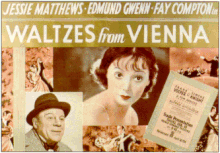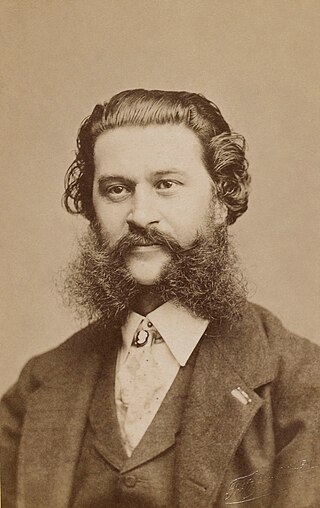
Johann Baptist Strauss II, also known as Johann Strauss Jr., the Younger or the Son, was an Austrian composer of light music, particularly dance music and operettas as well as a violinist. He composed over 500 waltzes, polkas, quadrilles, and other types of dance music, as well as several operettas and a ballet. In his lifetime, he was known as "The Waltz King", and was largely responsible for the popularity of the waltz in Vienna during the 19th century. Some of Johann Strauss's most famous works include "The Blue Danube", "Kaiser-Walzer", "Tales from the Vienna Woods", "Frühlingsstimmen", and the "Tritsch-Tratsch-Polka". Among his operettas, Die Fledermaus and Der Zigeunerbaron are the best known.
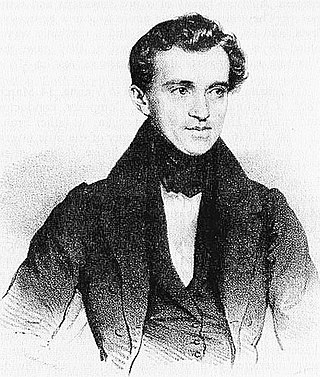
Johann Baptist Strauss I, also known as Johann Strauss Sr., the Elder or the Father, was an Austrian composer of the Romantic Period. He was famous for his light music, namely waltzes, polkas, and galops, which he popularized alongside Joseph Lanner, thereby setting the foundations for his sons—Johann, Josef and Eduard—to carry on his musical dynasty. He is best known for his composition of the Radetzky March.
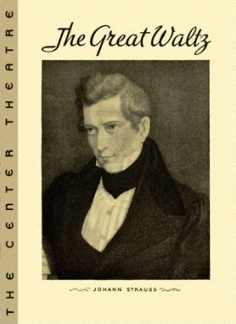
The Great Waltz is a musical conceived by Hassard Short with a book by Moss Hart and lyrics by Desmond Carter, using themes by Johann Strauss I and Johann Strauss II. It is based on a pasticcio by Erich Wolfgang Korngold and Julius Bittner called Walzer aus Wien, first performed in Vienna in 1930. The story of the musical is loosely based on the real-life feud between the older and younger Strauss, allegedly because of the father's jealousy of his son's greater talent.

Joseph Lanner was an Austrian dance music composer and dance orchestra conductor. He is best remembered as one of the earliest Viennese composers to reform the waltz from a simple peasant dance to something that even the highest society could enjoy, either as an accompaniment to the dance, or for the music's own sake. He was just as famous as his friend and musical rival Johann Strauss I, who was better known outside of Austria in their day because of his concert tours abroad, in particular, to France and England.

Rathausball-Tänze op. 438 is a waltz by composer Johann Strauss II written in 1890 in honour of the inauguration of the new city hall of Vienna. At the opening of the new banqueting hall (Festsaal) on 12 February 1890 two rival orchestras were commissioned to provide dance music for the occasion; the Strauss Orchestra under the direction of Eduard Strauss, and that of rival Kapellmeister Karl Michael Ziehrer who was head of the Vienna House Regiment 'Hoch und Deutschmeister No. 4'.

Rosen aus dem Süden, Op. 388, is a waltz medley composed by Johann Strauss II in 1880 with its themes drawn from the operetta Das Spitzentuch der Königin. Strauss dedicated the waltz to King Umberto I of Italy.

Wiener Blut Op. 354 is a waltz by Johann Strauss II first performed by the composer on 22 April 1873. The new dedication waltz was to celebrate the wedding of the Emperor Franz Joseph I's daughter Archduchess Gisela Louise Maria and Prince Leopold of Bavaria. However, the waltz was also chiefly noted by Strauss' biographers as the début of Strauss with the Vienna Philharmonic Orchestra where for many years, the Philharmonic had dismissed any association with the 'Waltz King' as it had not wished to be associated with mere 'light' or 'pops' music. The festival ball celebrating the event was held at the Musikverein Hall which is the venue for the present day Neujahrskonzert.

"Frühlingsstimmen", Op. 410 is an orchestral waltz, with optional solo soprano voice, written in 1882 by Johann Strauss II.

The Great Waltz is a 1938 American biographical film based very loosely on the life of Johann Strauss II. It starred Luise Rainer, Fernand Gravet (Gravey), and Miliza Korjus. Rainer received top billing at the producer's insistence, but her role is comparatively minor as Strauss' wife, Poldi Vogelhuber. It was the only starring role for Korjus, who was a famous opera soprano and played one in the film.

Simplicius is an operetta by Johann Strauss II. It was conceived from the work of HJC von Grimmelhausen titled Der abenteuerliche Simplicissimus or simply Adventurous Simplicissimus, which was opined by many to be the 17th century's greatest German novel. The libretto for this work was furnished by Victor Léon who was one of Vienna's promising talents of that era.

The Man Who Knew Too Much is a 1934 British spy thriller film directed by Alfred Hitchcock, featuring Leslie Banks and Peter Lorre, and released by Gaumont British. It was one of the most successful and critically acclaimed films of Hitchcock's British period.

The Emperor Waltz is a 1948 American musical film directed by Billy Wilder, and starring Bing Crosby and Joan Fontaine. Written by Wilder and Charles Brackett, the film is about a brash American gramophone salesman in Austria at the turn of the twentieth century who tries to convince Emperor Franz Joseph to buy a gramophone so the product will gain favor with the Austrian people. The Emperor Waltz was inspired by a real-life incident involving Franz Joseph I of Austria. Filmed in Jasper National Park in Canada, the picture premiered in London, Los Angeles, and New York in the spring of 1948, and was officially released in the United States July 2, 1948. In 1949, the film received Academy Award nominations for Best Costume Design and Best Music, as well as a Writers Guild of America Award nomination for Best Written American Musical.

Jamaica Inn is a 1939 British adventure thriller film directed by Alfred Hitchcock and adapted from Daphne du Maurier's 1936 novel of the same name. It is the first of three of du Maurier's works that Hitchcock adapted. It stars Charles Laughton and Maureen O'Hara in her first major screen role. It is the last film Hitchcock made in the United Kingdom before he moved to the United States.

Robert Elisabeth Stolz was an Austrian songwriter and conductor as well as a composer of operettas and film music.
Walzer aus Wien is a singspiel pasticcio in three acts, libretto by Alfred Maria Willner, Heinz Reichert and Ernst Marischka, music by Johann Strauss II (son), arranged by Erich Wolfgang Korngold and Julius Bittner, first performed at the Stadttheater in Vienna on 30 October 1930.
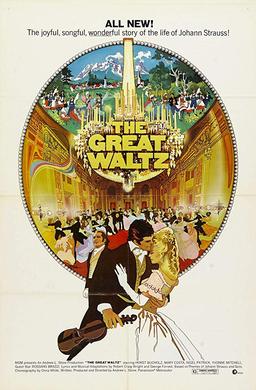
The Great Waltz is a 1972 American biographical musical film directed by Andrew L. Stone, and starring Horst Buchholz, Mary Costa, and Nigel Patrick, that follows 40 years in the life of composer Johann Strauss and his family. It is based on the musical The Great Waltz, and was Stone's final film. M-G-M released a previous film adaptation in 1938, which is about a different phase of the younger Strauss's life.

The Blue Danube is a 1932 British romance film directed by Herbert Wilcox and starring Brigitte Helm, Joseph Schildkraut and Desmond Jeans. Its plot, based on a short story by Doris Zinkeisen, concerns a Hungarian gypsy who leaves his girlfriend for a countess, but soon begins to suffer heartache. The Blue Danube was made in both English and German-language versions.

Waltz War is a 1933 German musical comedy film directed by Ludwig Berger and starring Renate Müller, Willy Fritsch and Paul Hörbiger. It is loosely based on the rivalry between waltz composers Joseph Lanner and Johann Strauss I, as well as the life of the Austrian ballet dancer Katti Lanner who eventually settled in Victorian Britain. It is also known by the alternative title of The Battle of the Walzes.
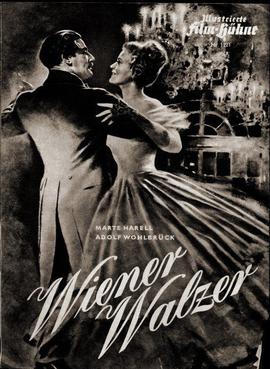
Vienna Waltzes is a 1951 Austrian historical musical drama film directed by Emil E. Reinert and starring Marte Harell, Anton Walbrook and Lilly Stepanek. It is also known by the alternative title of Vienna Dances.
The Strauss Dynasty is an Austrian biographical film in six parts from 1991. It depicts the careers of Johann Strauss (father), the composer of the Radetzky March, and his son Johann Strauss (son) ("Schani"), the composer of the waltz The Blue Danube, who, despite his father's resistance, also became a musician and competed with his father as a waltz composer.
